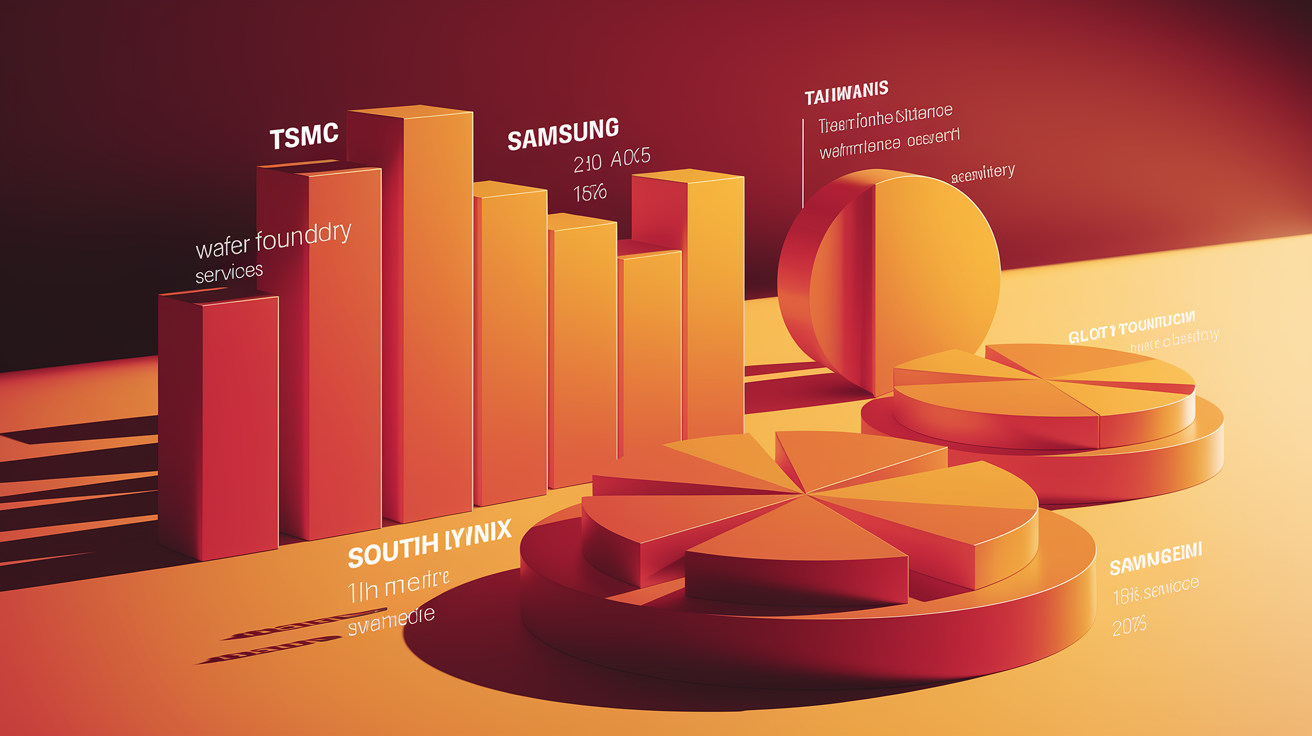The semiconductor industry is the heart of modern technology, and Taiwan and South Korea are the pulsating centers of this global network. While Taiwan dominates the wafer foundry services sector with TSMC, South Korea shines with Samsung and SK Hynix in the memory chip market. This article illuminates the market shares and growth opportunities of these countries to prepare investors and individuals for the challenges and potentials that await them in the semiconductor world.
Market Leadership in the Asian Semiconductor Market: A Comparison Between Taiwan and South Korea

The semiconductor industry is the pillar of the modern technological world, with Taiwan and South Korea as leading innovators in the sector. Both countries are known for their strong market presence, although they leverage different strengths. Taiwan focuses on TSMC’s wafer foundry expertise, while South Korea scores points with Samsung Electronics as a giant in the memory chip sector.
TSMC, the jewel of Taiwan, is driven by its ability to produce highly advanced semiconductor chips, essential for tech names such as Apple and Nvidia. With a revenue of $87 billion in 2024, TSMC has firmly maintained its top position in the global wafer foundry market. TSMC’s success lies in its continuous investment in cutting-edge manufacturing technologies that enable uninterrupted technological advancement.
At the same time, Samsung Electronics has positioned South Korea as the undisputed leader in the memory chip sector. Despite slightly lower revenue compared to TSMC, set at $83 billion in 2024, Samsung remains innovative and consistent in its memory chip production capability. These chips are essential for a wide range of electronic devices, making Samsung an indispensable link in the global supply chain.
The competition between these two countries is fueled by the ongoing pursuit of technological advancements in the field of artificial intelligence (AI) and the Internet of Things (IoT). Both nations aim to strengthen their positions and offer innovative solutions in these emerging markets. However, they must navigate the challenges of geopolitical tensions and unstable global supply chains.
Overall, this detailed analysis of the sector demonstrates that Taiwan and South Korea, despite their different specializations, are equivalent competitors in the semiconductor market. While Taiwan reaffirms its dominance in advanced manufacturing technologies, South Korea solidifies its position through relentless innovation and efficiency in the memory chip sector. Both countries show remarkable potential, particularly due to their willingness to invest in the future of semiconductor technology and maintain their leadership positions.
Emerging Opportunities and Challenges: The Semiconductor Industry of Taiwan and South Korea in Focus

In the dynamic world of semiconductor manufacturing, Taiwan and South Korea are at the forefront, offering significant growth opportunities alongside unique challenges. These nations play a decisive role in the global semiconductor value chain due to their innovative industrial culture and strategic developments.
Taiwan’s growth strategy strongly focuses on its consolidated infrastructure. The market leader in Taiwan, TSMC, dominates by using cutting-edge technologies essential for the production of advanced chips. TSMC’s access to advanced manufacturing technologies and intense research and development (R&D) activities leads to continuous innovation. Additionally, Taiwan plays a central role in strategic international alliances that promote global technology exchange. However, despite these advantages, Taiwan is vulnerable to external factors, particularly geopolitical tensions with China. These tensions pose the risk of destabilizing supply chains and jeopardizing economic stability. Another internal weakness is the lack of skilled labor, which could impact responsiveness to changes in demand.
On the South Korean side, a diversified industrial base leads to a robust demand market for semiconductors, particularly supported by the versatile electronics and automotive industries. Industry giants like Samsung and SK Hynix are not only key players in the memory chip market but also pioneers in developing new technologies such as AI and 5G. Strategic investments in these sectors position South Korea as a potentially influential power in the high-end semiconductor market of the future. Despite these advantages, South Korea faces strong internal competition. This dynamic could affect profit margins, and dependence on a few large companies, particularly Samsung, increases the risk of economic uncertainties. Additionally, they face regulatory challenges, particularly in the areas of environmental and labor standards.
Both countries demonstrate that strategic technological investments and the ability to leverage international partnerships are essential factors for promoting future market expansions. The challenges that Taiwan and South Korea face are considerable, but their ability to adapt to evolving market conditions and further expand strategic partnerships will be crucial for sustainable success. With the increasing demand for technologies like AI, IoT, and 5G, this could mark an exciting phase of development in the global semiconductor landscape.